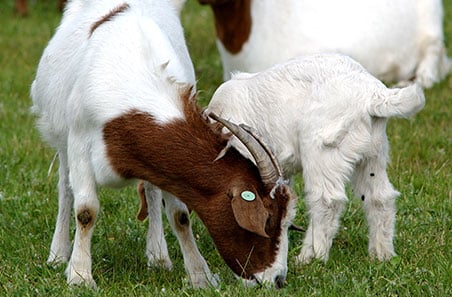Goat producers urged to prepare on-farm ahead of kidding
 With demand for Australian goatmeat likely to remain strong in 2017, producers looking to diversify into goat production or expand their operations are reminded to carefully assess their on-farm infrastructure requirements.
With demand for Australian goatmeat likely to remain strong in 2017, producers looking to diversify into goat production or expand their operations are reminded to carefully assess their on-farm infrastructure requirements.
Meat & Livestock Australia’s (MLA) Goat Industry Project Manager, Julie Petty, said the goatmeat industry was continuing to attract attention from producers as prices remained buoyant.
“In early January 2017, the over-the-hooks export goat indicators are remaining very strong, with 12kg to 16kg carcase weight (cwt) goats averaging 608c/kg and peaking at 700c/kg,” Ms Petty said.
“Solid demand and growing investment in the industry continue to strengthen the goat market both overseas and in Australia.”
Ms Petty said it was critical for producers to have suitable fencing in place before the next kidding started in autumn or new stock are brought on to a property, to help manage herds and protect stock from predators.
“Weaners from the upcoming autumn kidding will be a cost effective restocking option for many producers with per head prices significantly lower than some other species,” Ms Petty said.
“Now is the right time to make sure your on-farm infrastructure is in good working order so those paddocks are ready to go and you can make the most of your semi-managed goat herd.
“Goats require different infrastructure to cattle and sheep, although existing infrastructure can be modified easily enough to support a goat enterprise.
“There are many options depending on your personal preference. A fence built to contain meat sheep breeds would certainly be suitable for goats.
“Goats are not as difficult to contain as you might think and I would encourage producers considering expanding into goats to speak with someone who has already been down that road and still has goats and can give you some practical advice about how they trained their animals.”
Ms Petty said it was important to understand the behaviour of goats when considering fencing options.
“Goats are agile and can climb, crawl and jump. Unless appropriately trained in small holding paddocks to learn to respect the fences, they will test them and are quickly alert to irregularities such as gaps, open gates or broken panels,” Ms Petty said.
“The bottom third of the fence needs to be particularly secure to help prevent goats and kangaroos crawling under it.
“The goat’s climbing nature also means that they will readily use rocks and branches as ramps to help them over a fence. For that reason it’s best to avoid the use of angle stays on the inside of goat fences and keep fencelines clear of objects that can be used as ramps.”
To help producers address different aspects of the goat production system including on-farm infrastructure like fencing, MLA has produced a Going into Goats Guide which is filled with practical information and producer case studies. The guide was written for producers, by producers.
The guide is a free online resource comprising 11 modules and is available here: https://www.mla.com.au/extension-training-and-tools/going-into-goats/



